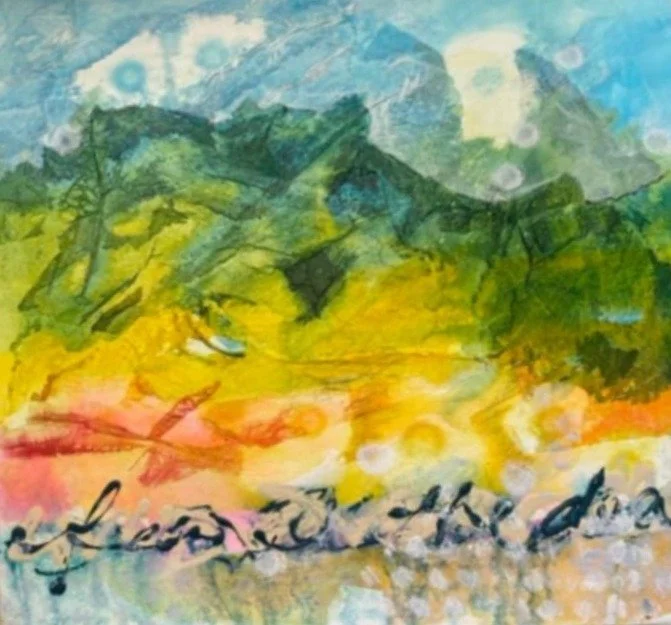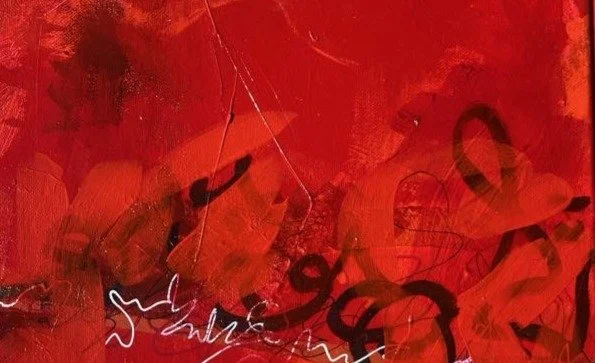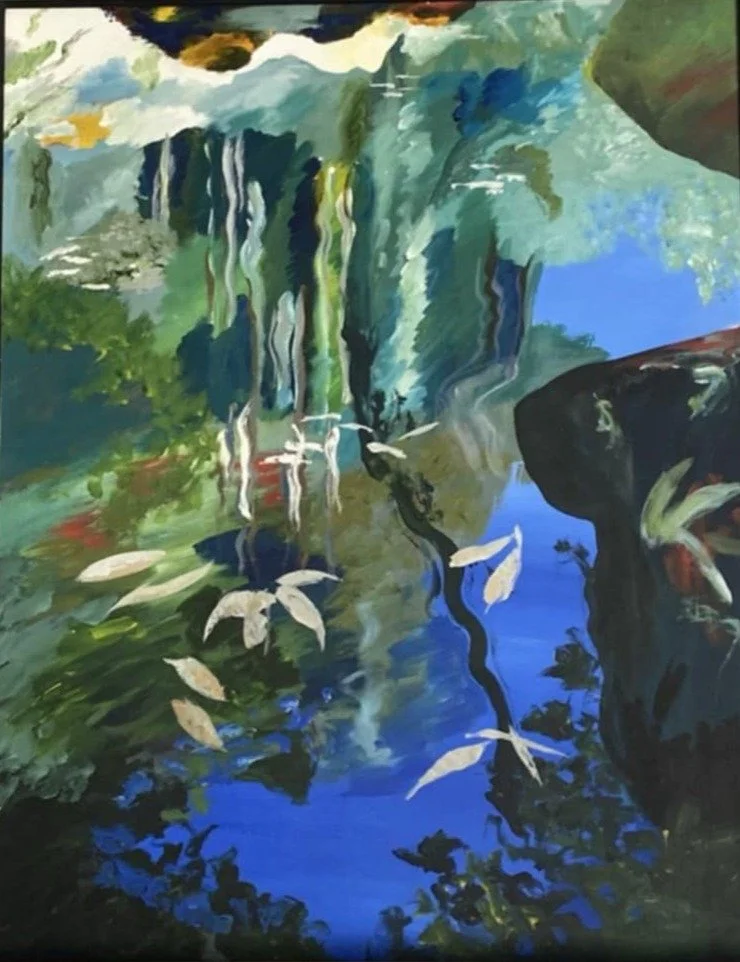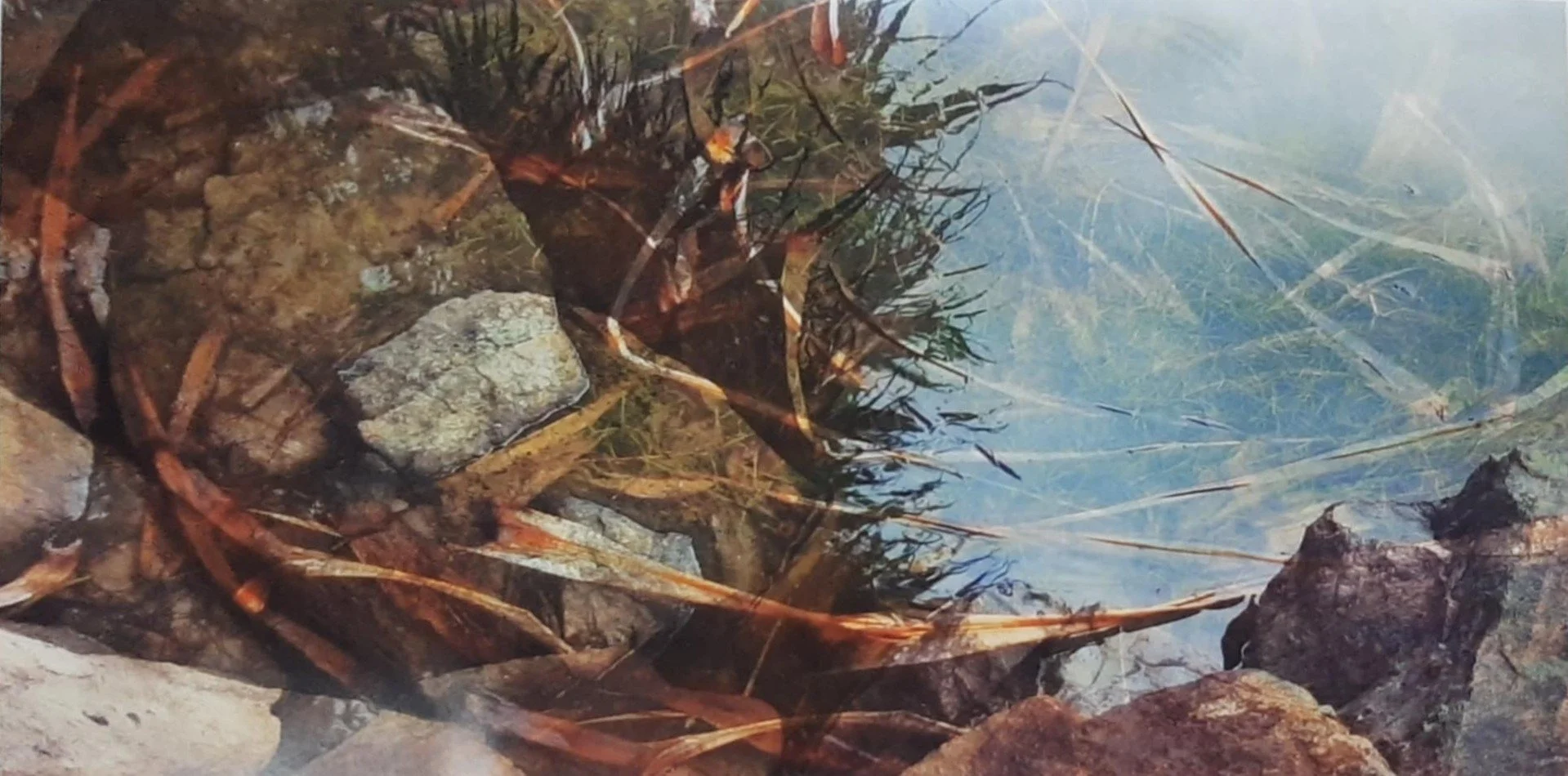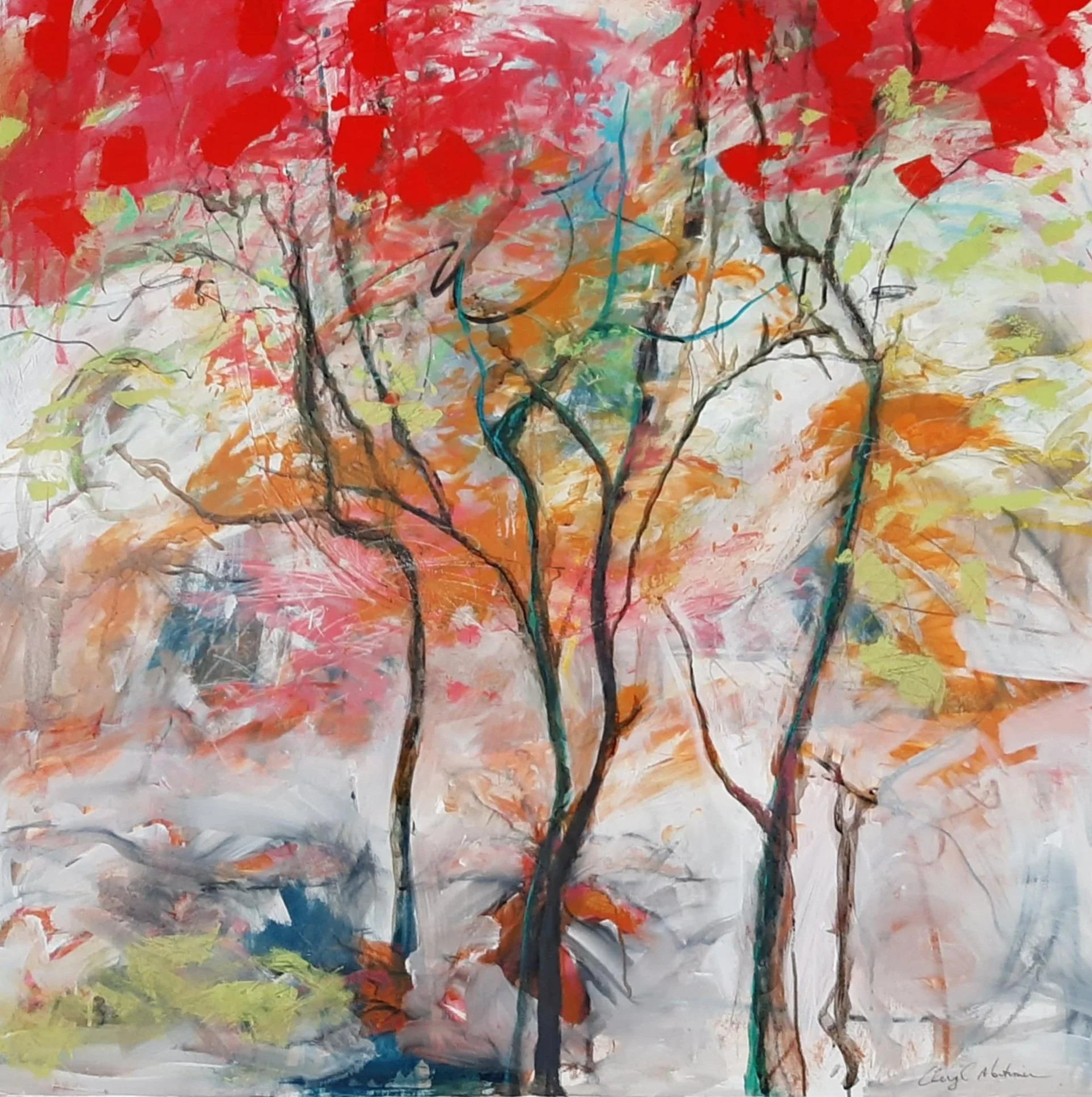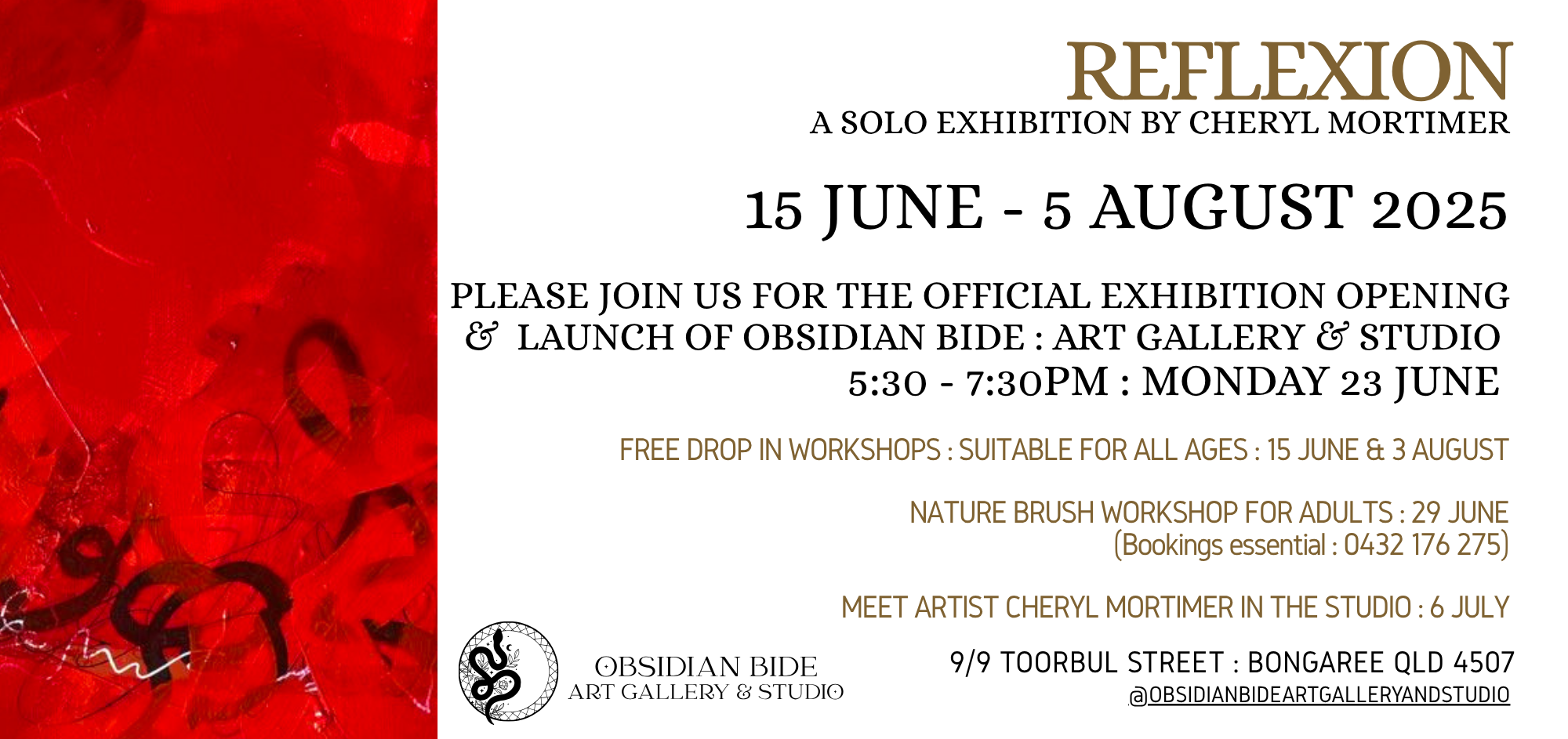
The work in this exhibition is an excavation of memory, landscape, and emotional sediment. Through layered processes combining painting, text, photography, printmaking, and textile, the artist explores what lies beneath the surface—both literally and symbolically. Creeks, reflections, and family histories ripple throughout, particularly those tied to the artists upbringing on Bribie Island.
Translucent layers reflect the stained, mirrored waters of Shirley Creek—across the road from the home where Cheryl grew up. Those fragments of love, and place remain embedded in the very fibre of her work. These works honour the tea tree-stained creeks of Bribie Island — sites of reflection, distortion, and transformation. The dark water reveals a world inverted—rocks, leaves, and sky—blurring surface with depth.
Fragments of text, including words recorded while travelling like the line from the poem recorded while visiting Canterbury Cathedral: “Everything ends, begins, ends…” echoing cycles of life, grief, and regeneration. Cyanotype text made from Shakespeare’s Sonnet 116 (“Love is not…”) is both underpainting and emotional terrain, gestural and furiously, stitched, scratched, painted over. Destroyed to be reborn. This is love, memory, anger, and hope transmuted.
Materials matter. Thread is used, not just as medium, but as feminist resistance reclaiming textile’s place from craft to concept. The stitching connects generations and genders, while printmaking gestures to historical art spaces women have long been excluded from.
This body of work spans decades from work made over 35 years ago, to recent painterly digital experiments with camera movement, shutter speeds and multiple exposures. Through all of it flows the water—black with tea tree, luminous with memory, holding everything that was and will be.


